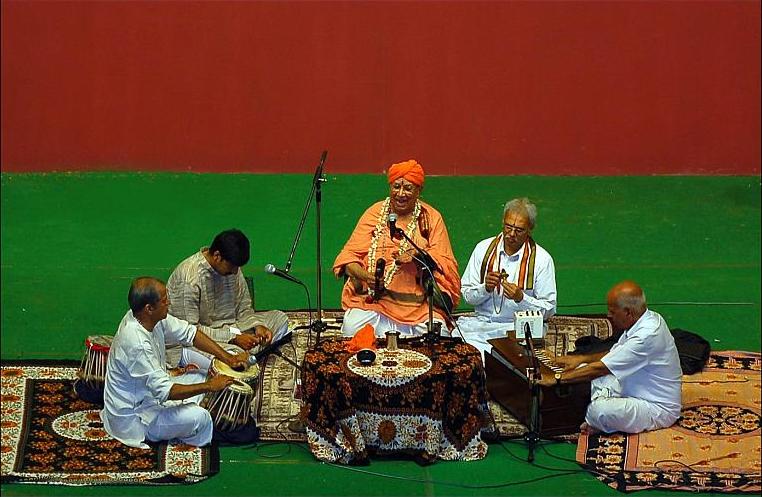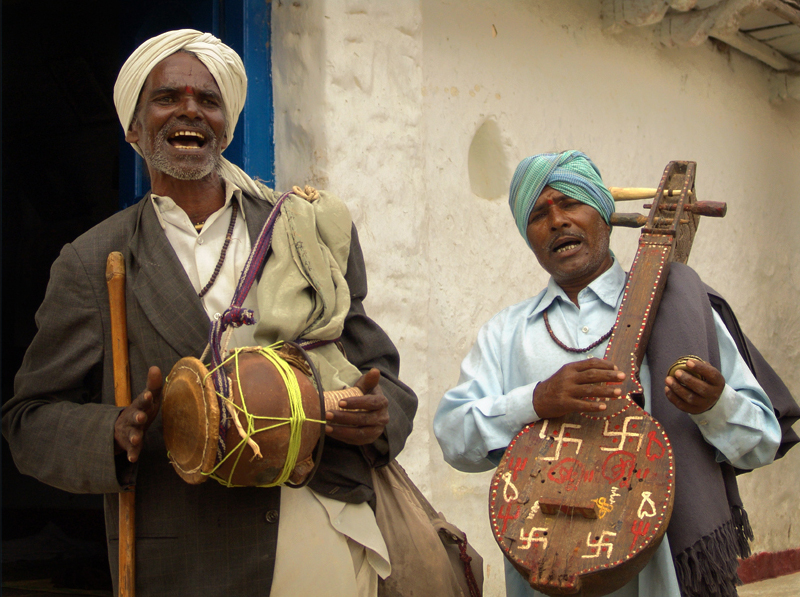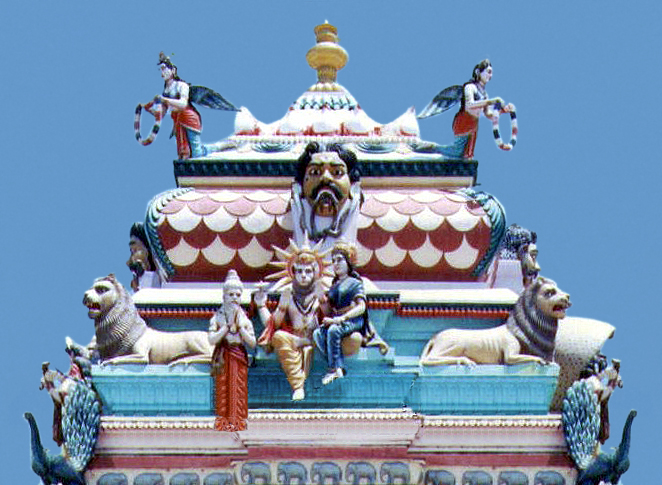|
Harikatha
''Harikatha'' (Kannada: ಹರಿಕಥೆ : ''Harikathe''; Telugu: హరికథ : ''Harikatha;'' Marathi: हरीपाठ '': Haripatha'', ), also known as ''Harikatha Kaalakshepam'' in Telugu and Tamil (), is a form of Hindu traditional discourse in which the storyteller explores a traditional theme, usually the life of a saint or a story from an Indian epic. The person telling the story through songs, music and narration is called a ''Haridasa''. Harikatha is a composite art form composed of storytelling, poetry, music, drama, dance, and philosophy most prevalent in Andhra Pradesh, Telangana, Maharashtra, Karnataka and ancient Tamil Nadu. Any Hindu religious theme may be the subject for the ''Harikatha''. At its peak ''Harikatha'' was a popular medium of entertainment, which helped transmit cultural, educational and religious values to the masses. The main aim of ''Harikatha'' is to imbue truth and righteousness in the minds of people and sow the seeds of devotion i ... [...More Info...] [...Related Items...] OR: [Wikipedia] [Google] [Baidu] |
Ajjada Adibhatla Narayana Dasu
The pandit Ajjada Adibhatla Narayana Das (31 August 1864 – 2 January 1945) was a poet, musician, dancer, linguist and philosopher of Andhra Pradesh. He was born in Ajjada village, near Bobbili, presently in Balijipeta mandal of Vizianagaram district, Andhra Pradesh, India. He translated Lalithasahasranama in 'Natu' Telugu, or pure Telugu language. He was also the one who taught Ashtadhyayi to Swami Vivekananda during his extensive travel of India in July 1890. References and external links Eminent Personsat vizianagaram.ap.nic.in * (self published) * * * * * * *Harikathapitamaha Srimadajjada Adibhatla Narayana Dasa Satajayantutsava Sanchika. 1967. Chirala. Samskruthi Samithi. * * * * References {{DEFAULTSORT:Dasu, Ajjada Adibhatla Narayana 1864 births 1945 deaths Telugu writers Indian male musicians 20th-century Indian musicians Musicians from Andhra Pradesh 19th-century Indian musicians People from Vizianagaram district People from Uttarandhra 20th-century male music ... [...More Info...] [...Related Items...] OR: [Wikipedia] [Google] [Baidu] |
Andhra Pradesh
Andhra Pradesh (, abbr. AP) is a state in the south-eastern coastal region of India. It is the seventh-largest state by area covering an area of and tenth-most populous state with 49,386,799 inhabitants. It is bordered by Telangana to the north-west, Chhattisgarh to the north, Odisha to the north-east, Tamil Nadu to the south, Karnataka to the west and the Bay of Bengal to the east. It has the second longest coastline in India after Gujarat, of about . Andhra State was the first state to be formed on a linguistic basis in India on 1 October 1953. On 1 November 1956, Andhra State was merged with the Telugu-speaking areas (ten districts) of the Hyderabad State to form United Andhra Pradesh. ln 2014 these merged areas of Hyderabad State are bifurcated from United Andhra Pradesh to form new state Telangana . Present form of Andhra similar to Andhra state.but some mandalas like Bhadrachalam still with Telangana. Visakhapatnam, Guntur, Kurnool is People Capital of And ... [...More Info...] [...Related Items...] OR: [Wikipedia] [Google] [Baidu] |
Muthiah Bhagavatar
Harikesanallur Muthiah Bhagavatar (15 November 1877 – 30 June 1945), commonly known as Muthiah Bhagavatar, is one of Carnatic classical music's famous twentieth-century composers. He also created about 20 ''ragas''. Early life Muthiah was born on 15 November 1877, in Harikesanallur, a small village in the Tirunelveli district of Tamil Nadu in India, into an affluent Brahmin Tamil family. He was exposed to music from a very early age, as his father was a patron of musicians. He lost his father at the young age of six years, and his maternal uncle M. Lakshmana Suri took over the responsibility for his education, initiating Muthiah into Sanskrit and Vedic studies. However, the love of music that had been implanted in him led Muthiah to leave his hometown of Harikesanallur, Tamil Nadu when he was only ten years in search of a teacher. He found the gifted teacher Padinaindumandapa Sambasiva Iyer at Tiruvarur, who recognised Muthiah's talent for music. Sambasiva Iyer was the fathe ... [...More Info...] [...Related Items...] OR: [Wikipedia] [Google] [Baidu] |
Burra Katha
Burra Katha, also spelled Burrakatha, is an oral storytelling technique in the Jangam Katha tradition, performed in villages of Andhra Pradesh and Telangana. The troupe consists of one main performer and two co-performers. It is a narrative entertainment that consists of prayers, solo drama, dance, songs, poems and jokes. The topic will be either a Hindu mythological story ( Jangam Katha) or a contemporary social issue. It became popular art form during the Telangana Rebellion in the early 1930-1950. Origin The modern form of Burra Katha was developed in Guntur district around 1942 with the aim of propagating political ideas among illiterate masses in villages. Etymology "Burra" is referred to tambura, a musical string instrument with a hollow shell. "Katha" means story. Burra means brain in Telugu. The shell resembles a human skull. It is made of baked clay or dried pumpkin, or of brass and copper. The instrument looks very similar to veena and the performer can pull and p ... [...More Info...] [...Related Items...] OR: [Wikipedia] [Google] [Baidu] |
Sant Bhadragiri Achyuta Das
Sant may refer to: People * Alfred Sant (born 1948), Maltese politician * Andrew Sant (born 1950), English-born Australian poet * David Sant (born 1968), Catalan director, actor and writer * Indira Sant (1914–2000), Indian poet * James Sant (1820–1916), British painter * Lorry Sant (1937–1995), Maltese politician Places * Sant State, a former princely salute state in Rewa Kantha, Gujarat, India * Sant, Övörkhangai, a district in Mongolia * Sant, Selenge, a district in Mongolia * Șanț, a commune in Bistriţa-Năsăud County, Romania * Șanț River, a tributary of the Trotuş River in Romania Religion * Sant (religion), in Hinduism, Jainism, and Buddhism, an enlightened human being, commonly translated as " Saint" * Sant Joan (other) Other * Sant tree (''Acacia nilotica''), a tree species found in Africa * Teniente General Benjamín Matienzo International Airport, Argentina (ICAO code: SANT) See also * Sants (other) Sants may refer to: * Sa ... [...More Info...] [...Related Items...] OR: [Wikipedia] [Google] [Baidu] |
Rama
Rama (; ), Ram, Raman or Ramar, also known as Ramachandra (; , ), is a major deity in Hinduism. He is the seventh and one of the most popular '' avatars'' of Vishnu. In Rama-centric traditions of Hinduism, he is considered the Supreme Being. Rama is said to have been born to Kaushalya and Dasharatha in Ayodhya, the ruler of the Kingdom of Kosala. His siblings included Lakshmana, Bharata, and Shatrughna. He married Sita. Though born in a royal family, their life is described in the Hindu texts as one challenged by unexpected changes such as an exile into impoverished and difficult circumstances, ethical questions and moral dilemmas. Of all their travails, the most notable is the kidnapping of Sita by demon-king Ravana, followed by the determined and epic efforts of Rama and Lakshmana to gain her freedom and destroy the evil Ravana against great odds. The entire life story of Rama, Sita and their companions allegorically discusses duties, rights and social responsibil ... [...More Info...] [...Related Items...] OR: [Wikipedia] [Google] [Baidu] |
Cymbal
A cymbal is a common percussion instrument. Often used in pairs, cymbals consist of thin, normally round plates of various alloys. The majority of cymbals are of indefinite pitch, although small disc-shaped cymbals based on ancient designs sound a definite note (such as crotales). Cymbals are used in many ensembles ranging from the orchestra, percussion ensembles, jazz bands, heavy metal bands, and marching groups. Drum kits usually incorporate at least a crash, ride, or crash/ride, and a pair of hi-hat cymbals. A player of cymbals is known as a cymbalist. Etymology and names The word cymbal is derived from the Latin ''cymbalum'', which is the latinisation of the Greek word ''kymbalon'', "cymbal", which in turn derives from ''kymbē'', "cup, bowl". In orchestral scores, cymbals may be indicated by the French ''cymbales''; German ''Becken'', ''Schellbecken'', ''Teller'', or ''Tschinellen''; Italian ''piatti'' or ''cinelli''; and Spanish ''platillos''. Many of these ... [...More Info...] [...Related Items...] OR: [Wikipedia] [Google] [Baidu] |
Mridangam
The mridangam is a percussion instrument of ancient origin. It is the primary rhythmic accompaniment in a Carnatic music ensemble. In Dhrupad, a modified version, the pakhawaj, is the primary percussion instrument. A related instrument is the Kendang, played in Maritime Southeast Asia. During a percussion ensemble, the mridangam is often accompanied by the ghatam, the kanjira, and the morsing. Etymology The word "Mridangam" is formulated by the union (sandhi) of the two Sanskrit words ''mŗt'' (clay or earth) and ''anga'' (limb), as the earliest versions of the instrument were made of hardened clay. Legend In ancient Hindu sculpture, painting, and mythology, the mridangam is often depicted as the instrument of choice for a number of deities including Ganesha (the remover of obstacles) and Nandi, who is the vehicle and follower of Shiva. Nandi is said to have played the mridangam during Shiva's primordial ''tandava'' dance, causing a divine rhythm to resound across the ... [...More Info...] [...Related Items...] OR: [Wikipedia] [Google] [Baidu] |
Sankranti
Sankranti ( sa, संक्रान्ति ''saṁkrānti or saṅkramaṇa'') means transmigration of the Sun from one zodiac to another in Indian astronomy. Each Sankranti is marked as the beginning of a month in the sidereal solar calendars followed in Andhra Pradesh, Uttarakhand, Tamil Nadu, Kerala, Karnataka, Telangana, Punjab, Odisha, Mithila region of Bihar and Nepal. On the other hand, in the sidereal solar Bengali calendar and Assamese calendar, a Sankranti is marked as the end of each month and the day following as the beginning of a new month. Important Sankrantis * Makar Sankranti: Marks the transition of the Sun into Makara Rashi (Capricorn) on its celestial path, and the six-month Uttarayana period. Makar Sankranti is also called Uttarayana - the day on which the sun begins his northward journey. The traditional Indian calendar is based on lunar positions, Sankranti is a solar event. The date of Makar Sankranti remains constant over a long term, 14 January o ... [...More Info...] [...Related Items...] OR: [Wikipedia] [Google] [Baidu] |
Haridasu
Haridasu goes from house to house singing songs. The people of Andhra Pradesh believe that Haridasu's melodious rendition of Sundarakanda or Bhagavatam on Sankranti Sankranti ( sa, संक्रान्ति ''saṁkrānti or saṅkramaṇa'') means transmigration of the Sun from one zodiac to another in Indian astronomy. Each Sankranti is marked as the beginning of a month in the sidereal solar calen ... brings new auspicious beginning in their lives. Haridasu was a very professional sanskrit scholar, successors were now currently working as a prime priest in BHADRACHALAM RAMA MANDIR, Telangana. A cultural theory :- Haridasu is a typical brahmin where Haridasu performs the rituals of death ceremony, widow Pooja etc.. which is considered as a low categorized work.hence, haridasu is now considered as a low caste of shudras from varna system precedents view :- There are two brothers who go for a Pooja ritual, where one of them ate the offerings of Kachcha food (food c ... [...More Info...] [...Related Items...] OR: [Wikipedia] [Google] [Baidu] |
Coastal Andhra
Coastal Andhra (South costal Andhra) also known as Kostha Andhra is a region in the state of Andhra Pradesh, India. Vijayawada is the largest city in this region. It was part of Madras State before 1953 and Andhra State from 1953 to 1956. According to the 2011 census, it has an area of which is 57.99% of the total state area and a population of 34,193,868 which is 69.20% of Andhra Pradesh state population. This area includes the coastal districts of Andhra Pradesh on the Circar Coast between the Eastern Ghats and the Bay of Bengal, from the northern border with Odisha to Tirupati district in the South. Coastal Andhra has rich agricultural land, owing to the delta of the Godavari Krishna river and Penna. The prosperity of Coastal Andhra can be attributed to its rich agricultural land and an abundant water supply from these three rivers. Rice grown in paddy fields is the main crop, with pulses and coconuts also being important. The fishing industry is also important to t ... [...More Info...] [...Related Items...] OR: [Wikipedia] [Google] [Baidu] |





